2024 EV sales in Australia: A deep dive into the electric car market that saw Tesla drop, BYD grow – and 10 new brands enter the market
- Australians bought a record 91,292 EVs in 2024, an increase of 4.7%
- 77% of all EVs sold here were sourced from China
- Tesla sales dropped 16.9%, but it still sells 42% of all EVs
- The Tesla Model 3 outsold the Toyota Camry for the second year
- 36 brands sold EVs in Australia in 2024, 10 of which sold no EVs in 2023
- 13 brands sold fewer EVs in 2024 compared with 2023
- Luxury brands outperform mainstream marques on EV sales
Sales of electric cars in Australia inched up in 2024.
That means we bought more EVs than ever in 2024.
A total of 91,292 pure battery electric vehicles (BEVs) were added to Australian roads throughout the year.
It’s a decent number, albeit not a spectacular one.
READ MORE: Australians bought a record number of EVs in 2024 (just); Tesla still dominates, BYD, MG, BMW, Volvo catching
READ MORE: Electric overload! Every EV coming to Australia in 2025
READ MORE: Green light for electric vehicles! Aussie CO2 standard tough on Toyota, SUVs and utes
READ MORE: Ultimate guide to buying an EV in Australia: Everything you need to know
It looks far less impressive when you consider the stratospheric percentage growth for EVs over recent years.
In 2021 we bought 17,243 EVs before annual growth of 94 percent (taking the 2022 tally to 33,410) followed by growth into 2023 of 161 percent (for 87,217 sales).
The growth between 2023 and 2024 was a more subdued 4.7 percent, which is indicative of how much tougher it is trying to convince regular Aussies into EVs.
Many of the early adopters have jumped.
Many in the industry say it’s harder getting the mainstream to break their petrol/diesel habit.
In that largely flat overall EV market there are some interesting results, starting with the big one – Tesla.
Let’s talk Tesla
Believe the headlines and you’d think Tesla is about to fizzle under a high voltage rock due to an unprecedented sales slump.
Yep, Tesla sales dropped. A fair bit.
The brand sold 7769 fewer EVs in Australia in 2024 than it did in 2023. That’s a 16.9 percent fall.
But there were a lot of sales to drop.
Tesla has dominated the EV market – and it still does.
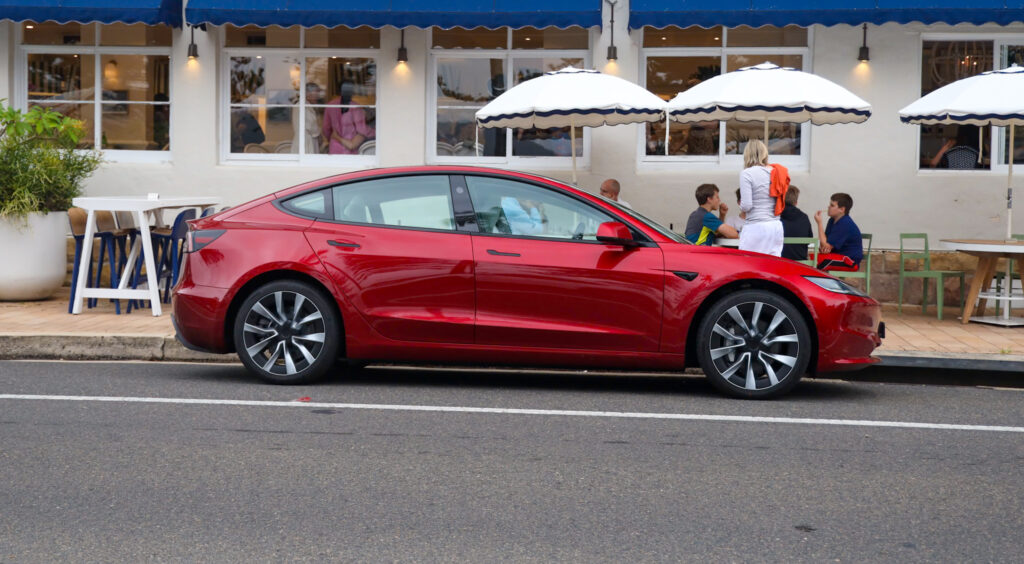
Until last year it accounted for more than half of all EV sales.
But in the same way as Toyota’s share of hybrid sales is dropping – Toyota is selling more cars, but increased competition means hybrid share has dropped – Tesla’s EV share is also dropping.
Tesla’s 38,347 sales in 2024 accounted for 42 percent of the entire electric car segment.
Two out of every five EVs Aussies bought were Teslas.
And the Model 3 and Model Y – the only two cars Tesla sells here – are still dominant in their respective market segments.
The Model 3 is the best-selling mid-sized car on the market. It’s outsold the Toyota Camry for two years.
The Model Y is one of the top selling SUVs in the country (out of about 150 options, only six other SUVs outsold it in 2024).
And in the premium end of the SUV market Tesla dominates.

Australians bought 57,087 mid-sized SUVs priced over $60,000 and 21,253 of them – more than one in three – were a Tesla Model Y.
The next best seller was the Lexus NX, with 6123 sales (351 of which were plug-in hybrids).
So, yes, Tesla sales dropped. But it’s still the dominant EV brand. And in 2025 its top seller – the Model Y – has been rejuvenated. First deliveries of the updated Model Y Juniper are due in May.
Plenty saw EV sales shrink
There were 36 brands that sold at least one EV in 2024 (some of them are truck brands).
Of those, 13 sold fewer EVs in 2024 than they did in 2023.
Mercedes-Benz had more EV models than any other brand (a total of 11, one of which has since been discontinued) but its electric sales went backwards 14.1 per cent.
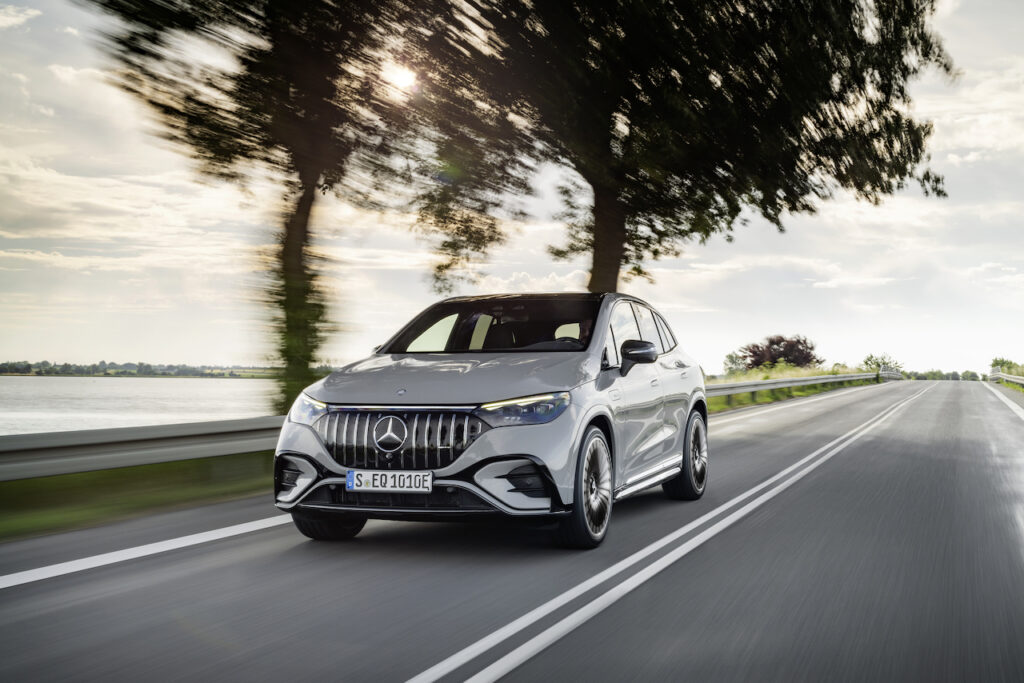
Polestar also shed 30.5 percent of its sales in 2024 and fledgling Volkswagen-owned brand Cupra sold almost half as many EVs last year as it did the year prior.
Genesis went backwards 68 percent on EVs, as did Porsche (32.7 percent), Nissan (26.2 percent) and Lexus (18.8 percent).
Mazda sold just three EVs in 2024, down from 13 (pitiful numbers) in 2023.
And struggling Jaguar sold just 12 EVs, down from 35.
13 brands with a reason to celebrate
There were 13 brands that sold more EVs in 2024 – some of them a lot more.
BMW had the biggest reason to celebrate. It was not only the fourth biggest seller of EVs in Australia in 2024, but its sales grew by 160 percent.
Almost 30 percent of all BMWs sold here – it’s comfortably the top selling luxury brand – was powered only by electricity.
The additional 4797 BMW electric car sales was more than the EV growth for the entire market (4075).
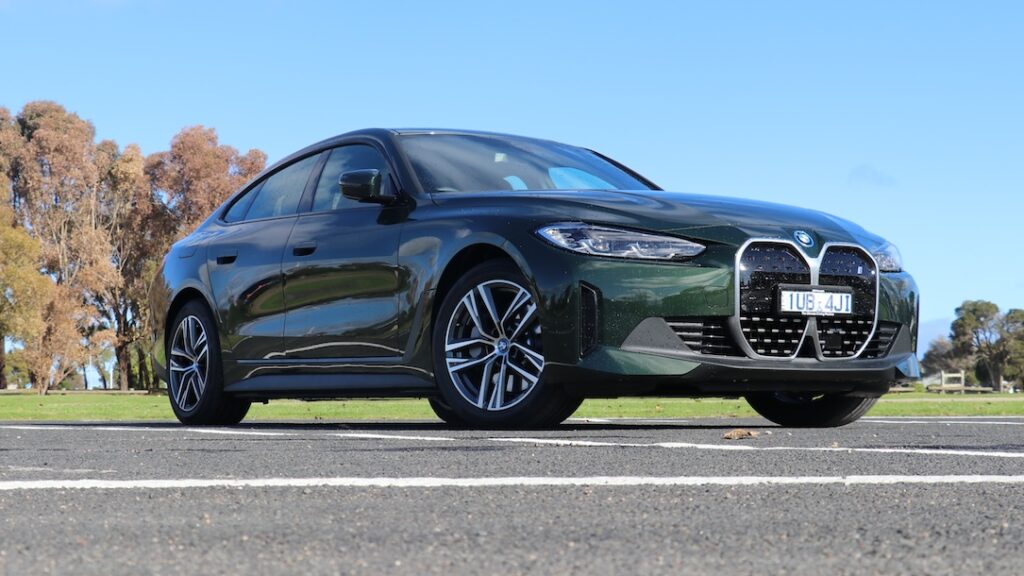
In other words, if BMW hadn’t grown as much, sales of electric cars may have gone backwards.
Other brands that had a bumper EV year included MG, up 2311 sales or 39 percent.
BYD’s battery electric share also grew 14.6 percent and with 12,438 sales the brand is a clear number two in the EV sales race.
Kia also increased 18.8 percent, Hyundai 11.3 percent, GWM 133 percent and Mini 104 percent.
New brands added to the EV mix
Ten new brands sold their first EV in Australia in 2024, including some heavy hitters such as Toyota and Subaru.
The others were Chery, Fiat, Jeep, Leapmotor, Skoda, Lotus, Iveco and Volkswagen (14 ID.Buzzes made it into the 2024 sales figures).
But none – not even Toyota, which sells almost one in five of all new vehicles – made a big impact.
Between those 10 brands new to the EV segment they sold just 1977 cars, accounting for 2.1 percent of overall EV sales.
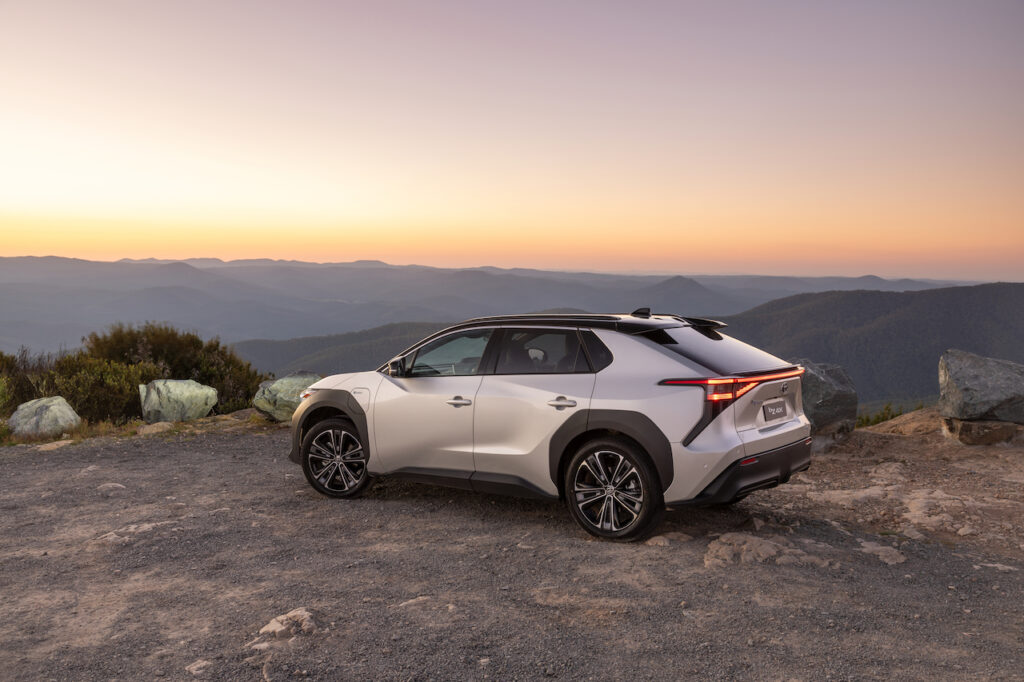
Toyota says it wants to increase its EV share (which shouldn’t be difficult given the low numbers).
But the brand also doesn’t currently have the firepower with the bZ4X that has struggled to find buyers.
Prestige and luxury drivers buy more EVs
The luxury market loves EVs, as the 2024 sales figures reinforce.
While some prestige and luxury brands still don’t have an EV presence (Land Rover, Maserati, Alfa Romeo and Ferrari among them) others have tiny sales (Audi and Lexus continue to languish in the EV market).
But of the 147,425 prestige and luxury cars sold last year 57,014 of them – or 39 percent – were powered purely by batteries.
Now that figure includes Tesla, which some argue isn’t a prestige brand (although with a starting price of about $60K it certainly has prestige prices).
But even if you pull Tesla out of that then 17 percent of all luxury cars sold were EVs. That’s more than double the 7.4 percent market share across the rest of the industry.
And some brands had some impressive results.
We’ve covered off BMW – an impressive 29.6 percent EV share – and its prestige small car sibling Mini managed 28 percent of its sales as EVs.
Volvo was even better, with 43 per cent of its Australian sales EVs (it sold a fraction less than 2023, down 2.2 percent).
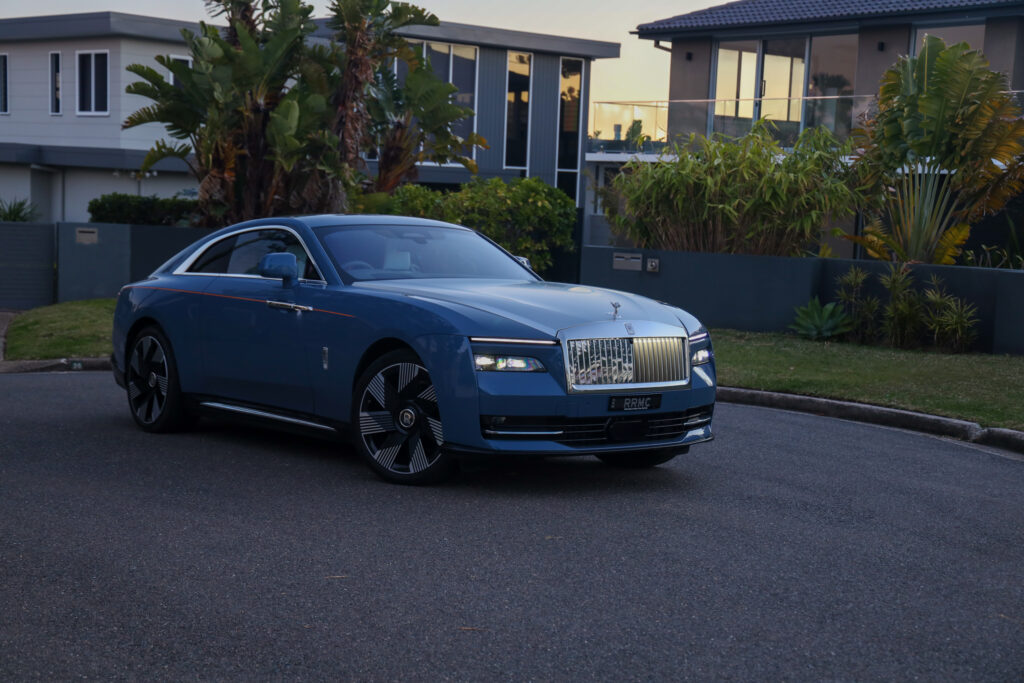
Of 54 Rolls-Royces sold in Australia last year 35 percent of them were the all-electric Spectre.
Even Lotus managed to beat the overall market, with 11 percent of its 155 sales EVs.
China dominates
If you’re buying an EV there’s a good chance it’ll come from China.
Last year 77 percent of all EVs sold here were sourced from China.
Obviously that includes Chinese brands such as LDV, Chery, MG, GWM and BYD, but it also includes Tesla, Polestar, Volvo, two Minis (the Aceman and electric Coopers), one BMW (the iX3) and one Kia (the EV5).
The two Lotus EVs – Eletre and Emeya – are also from China (the brand is these days owned by Geely, which also owns Volvo, among others).
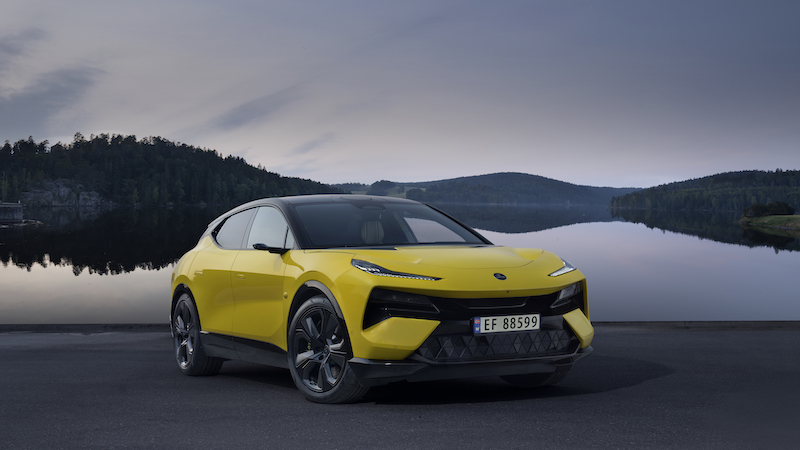
While some have hesitations about buying cars from China, the country is leading the way on EV development right now.
EVs more popular than petrol for mid-sized passenger cars
For the first time medium passenger cars (sedans, hatches and wagons) powered by electricity outsold those fuelled by petrol.
It’s a remarkable feat when you consider some of the big names in the mid-sized passenger car category: Toyota Camry, BMW 3-Series, Mercedes-Benz C-Class, Mazda6, Honda Accord and the Audi A4.
Of 46,146 sold last year 27,382 – 59 percent of them – were EVs.
Of course, the big seller was the Tesla Model 3, which accounted for 17,094 of those sales.
But the BYD Seal (6393) was also a popular four-door sedan, comfortably outselling the Mazda6, Mercedes C-Class and BMW 3-Series.
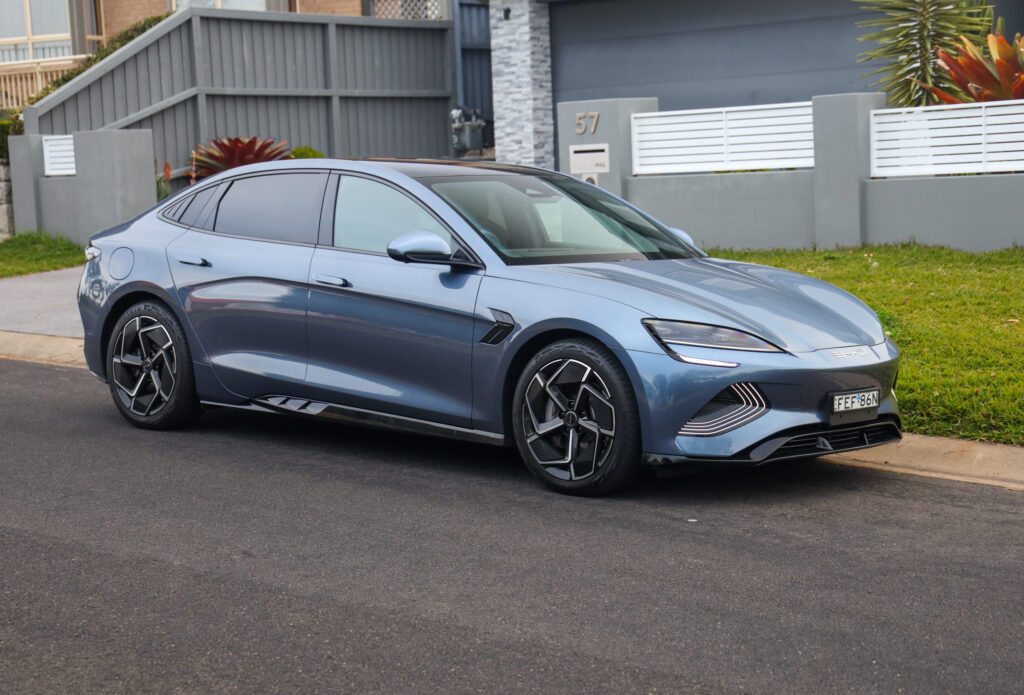
With 2062 sales the BMW i4 was almost as popular as the 3-Series (2472 sales).
And while the Polestar 2 went backwards on sales, its 1459 units shifted represented a healthy effort.
The final EV in the mid-sized category was the Hyundai Ioniq 6, with just 374 sales.
What about hydrogen?
Hydrogen fuel cell cars are still a minnow in the electrified world.
Last year Toyota brought another nine Mirais into the country and Hyundai a single Nexo.
None were sold to customers, just leased because each brand wants to be able to take them back and control who the cars are driven by.
But each also sees a viable longer term place for FCEVs (as does BMW).
At its sales announcement Toyota Australia sales and marketing chief Sean Hanley reiterated that he believes hydrogen fuel cell will play a role in Australia, but not until around 2035.
EV sales ranked: Every EV sold in Australia in 2024
| Rank | Make | Model | Sales |
| 1 | Tesla | Model Y | 21,253 |
| 2 | Tesla | Model 3 | 17,094 |
| 3 | MG | MG4 | 6,934 |
| 4 | BYD | Seal | 6,393 |
| 5 | BYD | Atto 3 | 5,751 |
| 6 | BMW | iX1 | 2,618 |
| 7 | Volvo | EX30 | 2,129 |
| 8 | BYD | Dolphin | 2,116 |
| 9 | BMW | i4 | 2,062 |
| 10 | Kia | EV6 | 1,785 |
| 11 | Polestar | 2 | 1,459 |
| 12 | Hyundai | Kona | 1,363 |
| 13 | BMW | iX2 | 1,280 |
| 14 | MG | ZS EV | 1,262 |
| 15 | GWM | Ora | 1,225 |
| 16 | Volvo | XC40 | 1,173 |
| 17 | BMW | iX3 | 1,092 |
| 18 | Mercedes-Benz | EQA | 1,044 |
| 19 | Toyota | bZ4X | 977 |
| 20 | Hyundai | Ioniq 5 | 933 |
| 21 | Mercedes-Benz | EQE SUV | 759 |
| 22 | Ford | Mustang Mach-E | 673 |
| 23 | Kia | Niro Electric | 649 |
| 24 | Kia | EV5 | 608 |
| 25 | Kia | EV9 | 568 |
| 26 | Volvo | C40 | 560 |
| 27 | BMW | iX | 556 |
| 28 | Mini | Countryman EV | 516 |
| 29 | Mercedes-Benz | EQB | 504 |
| 30 | Cupra | Born | 465 |
| 31 | Mini | Cooper Electric | 426 |
| 32 | Subaru | Solterra | 386 |
| 33 | Hyundai | Ioniq 6 | 374 |
| 34 | Audi | Q4 e-tron | 357 |
| 35 | Nissan | Leaf | 357 |
| 36 | Porsche | Taycan | 282 |
| 37 | Renault | Megane E-Tech | 266 |
| 38 | Lexus | RZ | 215 |
| 39 | Peugeot | e-2008 | 207 |
| 40 | Chery | Omoda E5 | 197 |
| 41 | Fiat | 500e/Abarth | 194 |
| 42 | Mini | Aceman | 183 |
| 43 | Polestar | 4 | 183 |
| 44 | Audi | Q8 e-tron | 174 |
| 45 | Mercedes-Benz | EQE | 162 |
| 46 | LDV | eDeliver 7 | 150 |
| 47 | BMW | i5 | 143 |
| 48 | Mercedes-Benz | EQS SUV | 136 |
| 49 | Audi | e-tron GT | 100 |
| 50 | Lexus | UX | 92 |
| 51 | Peugeot | e-Partner | 92 |
| 52 | Jeep | Avenger | 79 |
| 53 | Porsche | Macan EV | 78 |
| 54 | Polestar | 3 | 71 |
| 55 | Genesis | GV60 | 70 |
| 56 | Ford | E-Transit | 69 |
| 57 | Mercedes-Benz | EQC | 69 |
| 58 | Foton | Mobility T5 | 68 |
| 59 | Leapmotor | C10 | 64 |
| 60 | Renault | Kangoo E-Tech | 64 |
| 61 | Skoda | Enyaq | 48 |
| 62 | MG | Cyberster | 43 |
| 63 | BMW | i7 | 36 |
| 64 | LDV | eDeliver 9 | 28 |
| 65 | LDV | eT60 | 28 |
| 66 | Mercedes-Benz | e-Vito | 23 |
| 67 | LDV | Mifa 9 | 20 |
| 68 | Mercedes-Benz | EQS | 20 |
| 69 | Hyundai | Mighty | 19 |
| 70 | Rolls-Royce | Spectre | 19 |
| 71 | Genesis | GV70 Electrified | 17 |
| 72 | Mercedes-Benz | EQV | 14 |
| 73 | Jaguar | I-Pace | 12 |
| 74 | Lotus | Eletre | 12 |
| 75 | Peugeot | e-Expert | 9 |
| 76 | Sea Electric | MD | 9 |
| 77 | Volkswagen | ID.Buzz | 8 |
| 78 | Mercedes-Benz | e-Sprinter | 6 |
| 79 | Volkswagen | ID.Buzz Cargo | 6 |
| 80 | Audi | Q6 e-tron | 5 |
| 81 | Lotus | Emeya | 5 |
| 82 | Genesis | G80 Electrified | 4 |
| 83 | Mazda | MX-30 EV | 3 |
| 84 | SEA Electric | HD | 3 |
| 85 | Peugeot | e-308 | 2 |
| 86 | Iveco | HD van | 1 |
| 87 | Mercedes-Benz | G580e | 1 |
EV by brand: Every car maker’s Australian EV sales in 2024
| Make | 2024 EV sales | Change compared to 2023 | % change |
| Tesla | 38,347 | -7,769 | -16.8% |
| BYD | 14,260 | 1,822 | +14.6% |
| MG | 8,239 | 2,311 | +39.0% |
| BMW | 7,787 | 4,797 | +160.4% |
| Volvo | 3,862 | -87 | -2.2% |
| Kia | 3,610 | 571 | +18.8% |
| Mercedes-Benz | 2,738 | -450 | -14.1% |
| Hyundai | 2,689 | 272 | +11.3% |
| Polestar | 1,713 | -750 | -30.5% |
| GWM | 1,225 | 699 | +132.9% |
| Mini | 1,125 | 574 | +104.2% |
| Toyota | 977 | 977 | – |
| Ford | 742 | 630 | +562.5% |
| Audi | 636 | 97 | +18.0% |
| Cupra | 465 | -422 | -47.6% |
| Subaru | 386 | 386 | – |
| Porsche | 360 | -175 | -32.7% |
| Nissan | 357 | -127 | -26.2% |
| Renault | 330 | 309 | +1471.4% |
| Peugeot | 310 | 182 | +142.2% |
| Lexus | 307 | -71 | -18.8% |
| LDV | 226 | 87 | +62.6% |
| Chery | 197 | 197 | – |
| Fiat | 194 | 194 | – |
| Genesis | 91 | -189 | -67.5% |
| Jeep | 79 | 79 | – |
| Foton | 68 | -3 | -4.2% |
| Leapmotor | 64 | 64 | – |
| Skoda | 48 | 48 | – |
| Rolls-Royce | 19 | 16 | +533.3% |
| Lotus | 17 | 17 | – |
| Volkswagen | 14 | 14 | – |
| Jaguar | 12 | -23 | -65.7% |
| Sea Electric | 12 | -14 | -53.8% |
| Mazda | 3 | -10 | -76.9% |
| Iveco | 1 | 1 | – |

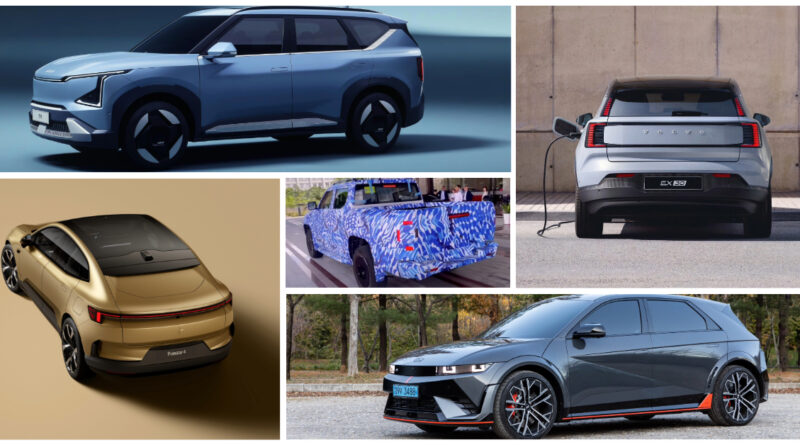
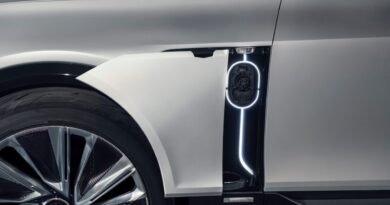
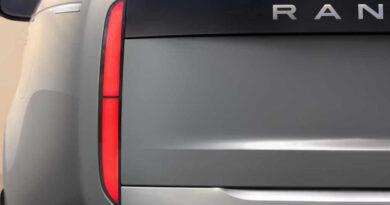
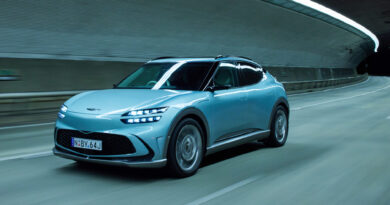
I think there will be a big shake up next year with the BYD Shark. A mixture of the Shark selling well and some added competition from lots of new enterants to the Model 3 and Y’s market share in their respective segments, might give BYD enough to take top spot next year.
Hi Toby,
Why does your article on the effect of Trump’s tariffs in today’s Guardian (5 Feb. 2025) say, “ Meanwhile, in Australia, although sales of EVs slowed dramatically last year, competition ramped up and is likely to intensify in 2025.”, but in this article you say they “rose by 4.7%” in 2024? Which of your statements is true?
Jason